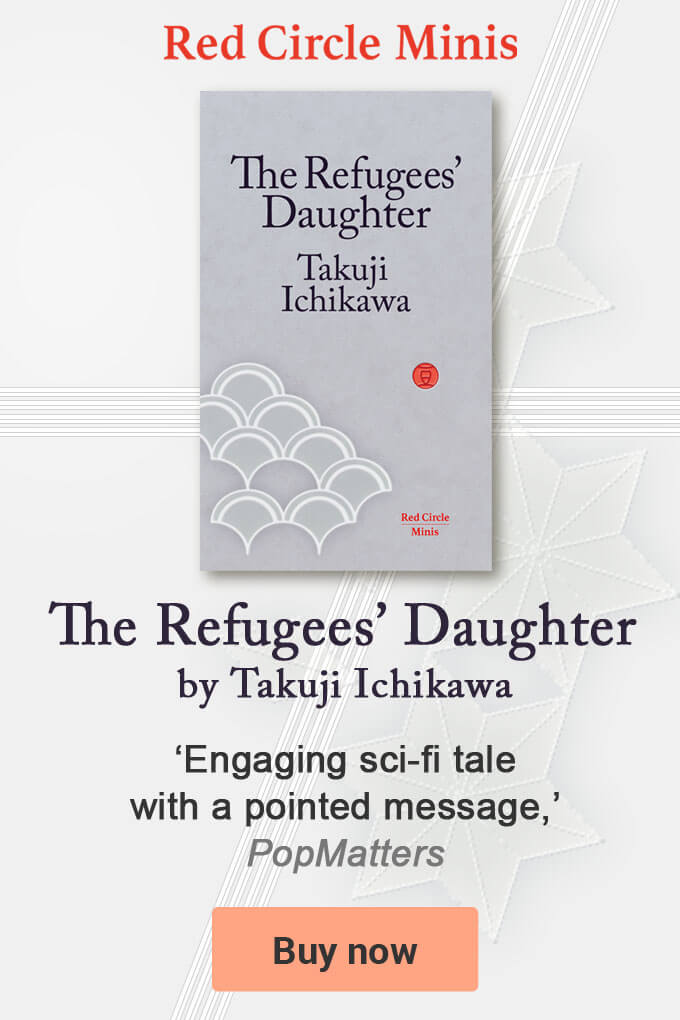In the late 1880s a series of articles appeared in the Japanese media about ‘Dangerous Books’ for women[UPDATED: 3-1-2023]
In the late 1880s much was changing in Japan. It was Meiji era (1868-1912) Japan, when the nation was experiencing a period of rapid modernisation and opening up to the West. Foreign visitors to Japan were increasing in number, foreign books and ideas were arriving in Japan and Japan’s first modern novel, The Drifting Cloud by Futabatei Shimei (1864-1909) had been penned.
Perhaps it is not surprising given this climate and the growing concern that some had about the new direction Japan was heading that articles started appearing about the dangers of fiction and especially novels read by Japanese women.
A series of articles appeared, mostly written by men, in the press between 1889 and 1890 about the problems of women reading novels and the danger that novels posed for women and the health of the nation.
The concerns raised were not just about books, but also about the new literary freedom that women were experiencing, about the choice of their reading matter, and also their new ability to publish and write for new publications such as Jogaku Zassshi, the Women’s Education Journal, a magazine launched in 1885 by Yoshiharu Iwamoto (1863-1942) a famous Meiji era advocate for women’s education.
Books and often ones imported from the West were also starting to become the ultimate ‘must-clutch’ fashion accessories for young women and schoolgirls in a visible outward public expression of these new freedoms.
There were concerns not just about new and imported publications, but also about the classics, even The Tale of Genji, which had been required reading for over a thousand years for Japanese aristocratic women. Commentators were worried about the temperaments of the female characters and the lusty content.
Examples of titles of the type of articles that appeared include: Advantages and Disadvantages of Young Women Reading Novels, Young Women And Novels, Problems of Girls Education by Novels, and Behaviour and Morality.
Some of the concerns raised were: that if girls wasted their lives and energy reading novels they would not be able to live a normal married life; that novels portrayed unreasonable expectations and misguided hopes; that reading would increase divorce rates as fictional men and real husbands differed.
In a general sense many of the concerns voiced in the 1880s are similar to the ones raised today about the danger of social media, the Internet, and video games. Perhaps they were the click bait of their era designed to help sell magazines and newspapers with their growing female readerships. Even today, the Japanese media enjoy covering scandals and scare stories about the shocking behaviour of high school and university age girls.
These concerns were, however, also being raised at a similar time to when Western travellers to Japan, such as the British travel writer Isabella L. Bird (1831-1904), were writing about their observations of Japan, with its dangerous corrupting and popular crime fiction, and lack of religious books, as well as their thoughts about the role of women in Japanese society.
These early Japan commentators often looked back at moral codes, such as the Japanese Code of Morals for Women first published in Japan during the Tokugawa period (1603-1868), as well as reading matter and attitudes, that were rapidly becoming outdated. It is no easy task, but these early Japan watchers and commentators were probably less well attuned to the new real currents within a changing Japanese society, and the complex nuances of a large island nation, than they knew or would perhaps interest their readers who were reading about Japan for the first time.
However, there was no stopping these trendsetting Japanese women, and the momentum they generated for women reading and writing has not ceased since. This was actually in fact nothing new as aristocratic women had been reading and writing highly creatively for a very long time in Japan.
That said, in 1903, twenty years after these articles started appearing in the press worrying about whether Japanese women would remain ryosai kenbo, good wife wise mother, as per the popular term coined in the Meiji era about what was expected of women, the first Western-style magazine specifically targeting women was launched. 36 years after the first Western-style magazine was launched in Japan.
This launch of a commercial magazine targeting Japanese women was followed by another groundbreaking launch by five pioneering feminists of a magazine called Seito, Blue Stocking in 1911 that shocked the nation and had issues banned on occasion as they apparently posed a danger to the nation. It covered topics such as prostitution, abortion, women’ suffrage (something they got, universally, approved in 1945) and poverty.

